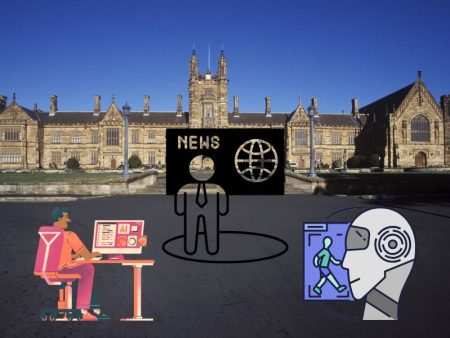Ever been lured into buying a phone case right after adding a shiny new phone to your cart?
Same.
Sometimes it’s helpful, sometimes it’s pushy, and sometimes… it’s so smart it’s a little scary.
That’s the magic (and mystery) of upselling and cross-selling. Done well, it’s like a gentle nudge from a thoughtful friend: “Hey, you might like this too.” Done badly, it feels like a used car salesman in your inbox.
So, how do you get it right—especially in a digital world full of noise, options, and attention spans shorter than a TikTok?
You use AI. Smartly. Not in a “set it and forget it” way, but in a “let me understand my customers deeply” kind of way.
Let’s dive in. But fair warning—I’m not giving you a corporate lecture. This is the real talk version.
First, What the Heck Is Upselling vs. Cross-Selling?
Quick pit stop in jargon town.
Upselling is when you encourage someone to buy a more premium version of what they’re already considering. Think: “You’ve picked the medium coffee—want the large for 50¢ more?”
Cross-selling is when you suggest complementary items. Like fries with your burger. Or socks with your new sneakers.
It’s not manipulation. It’s recommendation.
The goal isn’t to squeeze people dry. It’s to add value. If you’re not doing that, you’re just noise.
Flashback: The Time I Was Cross-Sold Into Bliss
I still remember ordering a candle online. I just wanted the one. Calm lavender vibes. Nothing fancy.
But right as I hit checkout, I saw this little message:
“People who bought Lavender Dream also loved ‘Eucalyptus Escape’ — burn them together for a spa-like experience.”
And there it was. Hook. Line. Scented wick.
Was I annoyed? Nope. I was delighted. I felt understood.
That right there? That’s AI-powered cross-selling done right. Because let’s be honest—humans don’t have the time (or data) to track those purchase pairings at scale.
So, How Does AI Make Upselling and Cross-Selling Smarter?
Let me say it bluntly: AI doesn’t guess. It learns.
Traditional upselling was basically throwing spaghetti at the wall. AI, though? It knows your customer’s favorite pasta shape, sauce preference, and whether they’re gluten-free.
Here’s how it works under the hood:
- Behavioral Tracking
AI watches what customers browse, linger on, abandon, or buy—and uses those signals to predict what they might want next.
- Personalization Engines
It’s not just “people also bought this.” It’s “based on your behavior, history, and timing, this is what you might want right now.”
- Context Awareness
Are they a first-time buyer? Returning after six months? Browsing from their phone at 2 AM? AI can adjust recommendations in real-time based on context.
The result? Suggestions that feel like they were made by a savvy shop assistant who knows you better than your best friend.
“But Won’t Customers Get Creeped Out?”
Fair question.
There’s a fine line between helpful and stalkerish. The key is transparency and tone. Don’t just say, “We see you looked at XYZ five times.” That’s creepy.
Instead, let AI work behind the scenes. Present the result, not the process.
Like:
“Based on what you’ve shown interest in, we think you’ll love this.”
See? Friendly. Helpful. Not invasive.
It’s about empathy, not analytics.
Let’s Talk Tools: What You Actually Need
You don’t need a full tech team or a data science PhD to do this. There are already tools that bake AI into everyday eCommerce workflows.
One great place to start? Ecommerce AI Automation. These systems help you predict customer behavior, build smarter product suggestions, and optimize sales funnels—without lifting a finger every five minutes.
They’re like digital assistants that never sleep, don’t complain, and—let’s be honest—probably make better decisions than we do when we’re on our third cup of coffee.
Real Talk: Common Mistakes to Avoid
AI is powerful, but it’s not magic. You can still mess this up.
❌ Overloading Customers
Don’t recommend six add-ons when someone just wants a t-shirt. That’s not helpful. It’s exhausting.
❌ Ignoring Timing
Don’t push a $500 upgrade five seconds after someone clicks on a $20 item. Give it space. Read the room.
❌ One-Size-Fits-All Promos
Blanket upsells are the worst. If I bought a yoga mat yesterday, don’t upsell me another mat today. Recommend a water bottle or class pass instead.
What About Chatbots?
Oh, let’s talk about them. Because chatbots have evolved hard.
Gone are the days of clunky scripts and robotic replies. Today’s Ecommerce AI Chatbot options are conversational, context-aware, and straight-up helpful.
Here’s how chatbots can turbocharge your upselling:
- Live Recommendations: Based on what the user is saying, not just what they’ve clicked.
- Inventory Awareness: Suggesting in-stock items, not just wishlist unicorns.
- Tone Matching: Speaking in a way that feels human (yep, kinda like what I’m doing here).
One of my favorite chatbot moments? A customer asked, “Does this come in navy blue?” and the bot replied:
“It does—and just FYI, people usually pair it with the white denim we just restocked 😉”
That’s sales and service. Seamless.
The Secret Sauce: Emotional Intelligence
I know, I know. AI + feelings? Sounds like a weird sci-fi pitch.
But here’s the thing—AI that sells well mimics empathy.
It listens. It learns. It understands nuance.
You’re not just optimizing for conversions—you’re optimizing for connection.
That might sound soft. But trust me, people feel when they’re being sold to vs. being helped. And they remember which brands made them feel seen, not sold.
Okay, Let’s Circle Back
I know I’ve been bouncing around (non-linear storytelling, anyone?), but let’s pull it together.
Here’s your quick recap:
✅ Upselling = “Want the deluxe version?”
✅ Cross-selling = “This goes great with what you’re already buying.”
✅ AI = Your behind-the-scenes genius assistant
✅ Good AI = Context-aware, emotionally intelligent, and personalized
✅ Great AI = Makes the customer feel heard, not just herded
And where do you find this greatness? Well, if you’re serious about your Ecommerce growth, now’s the time to stop duct-taping solutions together and start building with tools that were literally designed for this stuff.
The Final Thought (and a Little Bit of Sass)
Look, you could keep guessing what customers want. You could keep tossing upsells at random and hoping for the best.
But that’s like playing darts in the dark.
Or… you could switch on AI and let it light the room, hand you the dart, and whisper, “Aim two inches left.”
Your call.
But if you ask me?
Smarter upselling and cross-selling isn’t about tech. It’s about trust.
And AI, when used right, helps you earn it.
Every click. Every cart. Every candle.


